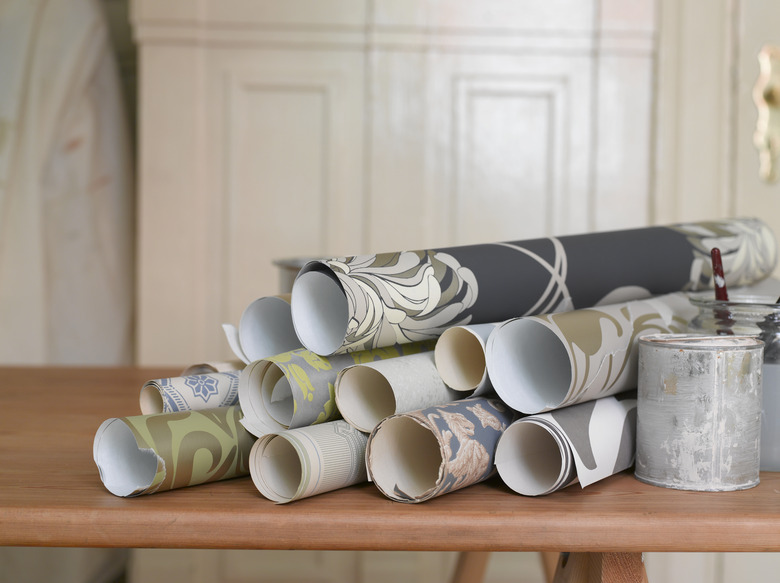How To Convert A Lineal Yard To Square Feet
When you purchase materials that come in a roll, you usually pay for them by the lineal yard, also known as a linear yard. Two of the most common examples are fabric and wall-covering materials. When you unroll these materials and others like them, a linear yard covers a certain area measured in square feet, and that area depends on the width of the roll. Some materials, like plastic sheeting, are folded over on the roll, so the actual width is a multiple of the roll width that is determined by how many times the plastic is folded.
The conversion from linear yards to square feet is a simple arithmetic calculation, but sometimes, the units can make things confusing. A yard is 3 feet — so that part is easy — but roll widths are usually measured in inches, and if you want the area in square feet, you'll have to convert the inches to feet, which usually produces fractions. It's nothing your calculator can't handle, but if you want to take the easy way out, you can always use the online conversion calculator that many manufacturers supply for their products.
Number of Square Feet in a Yard
Suppose you want to purchase fiberglass fabric that comes in 38-inch rolls. You can set up a simple calculation that correlates linear yards to square feet of coverage by doing the following:
- Convert the roll width to feet: 38 inches divided by 12 = 3.2 feet (approximately).
- Convert the length to feet: 1 yard = 3 feet.
- Multiply the length (in feet) by the width (in feet) to get 9.6 square feet.
Using the same calculation, a 50-inch roll would yield 12.51 square feet per yard.
Now that you know how many square feet are in a yard, just multiply the number of square feet per yard by the number of yards you purchase to figure the square footage of the material you are purchasing.
Calculating Linear Yards of Wallpaper
When you purchase wallpaper, you do the calculation in reverse because you first measure the square footage of the coverage area and then use that measurement to calculate the number of yards you need to cover it. Again, the calculation depends on the width of the wallpaper roll.
Suppose you purchase wallpaper that comes in 42-inch rolls. That corresponds to a width of 3.5 feet, so a yard of paper covers an area of 3 x 3.5 = 10.5 square feet. On the other hand, if the width of the roll is only 36 inches, a yard covers only 9 square feet.
Measure the length and height of all the walls you intend to cover in feet, taking height measurements from the ceiling to the top of the baseboards and add together the areas of all the walls. You won't be papering over doors, windows, and other openings, so measure those areas and subtract them from the total. Divide the total area minus the areas of doors and windows by 10.5 to get the total number of linear yards of wallpaper you need, assuming a roll width of 42 inches. If the roll is only 36 inches wide, divide by 9, which will increase the number of yards you need.
Calculating Linear Yards for Sheet Plastic
Because sheet plastic is folded over several times on the roll, you can't get the width by direct measurement. Instead, simply look on the packaging. It will tell you the width of the unfolded sheet as well as the length of the roll (usually in feet).
Suppose you purchase a 100-foot roll that is 40 feet wide to solarize your grass to get the ground ready for new grass. That means the entire roll covers 4,000 square feet. Measure the length and width of the surface you need to cover and divide that area by 4,000 to determine the number of rolls of plastic you need to purchase.
